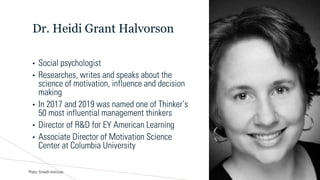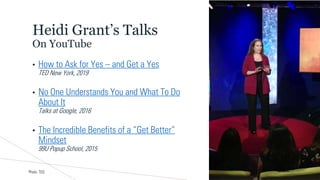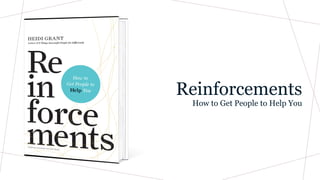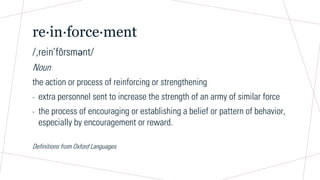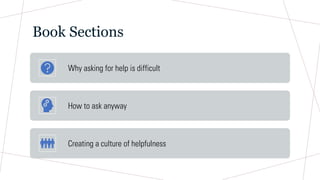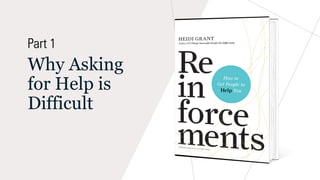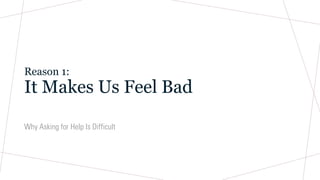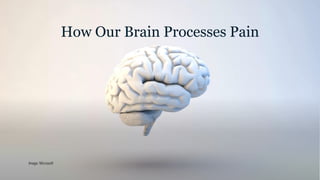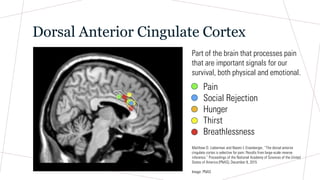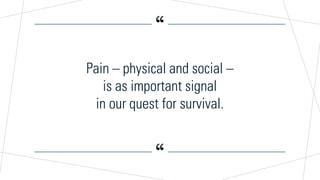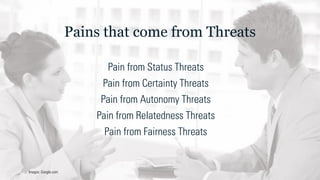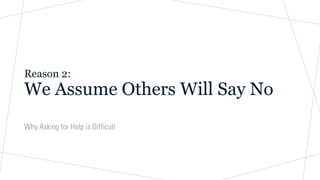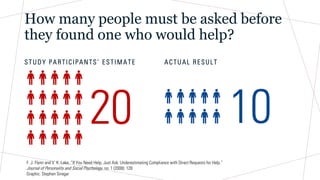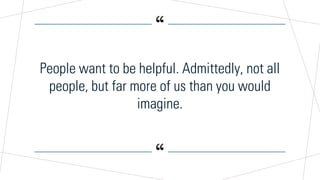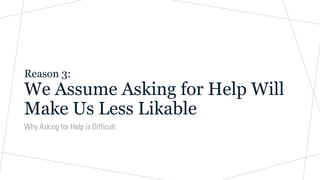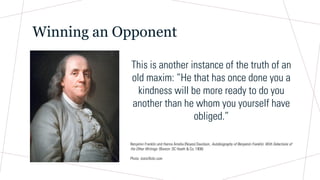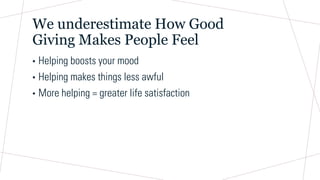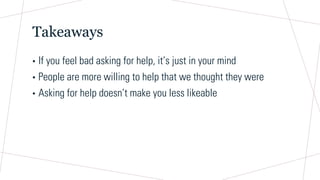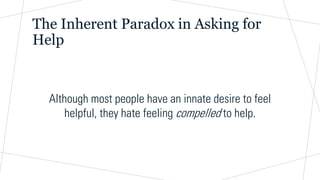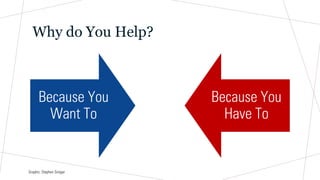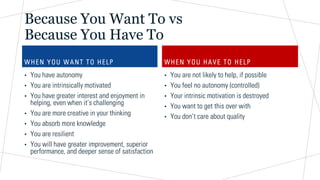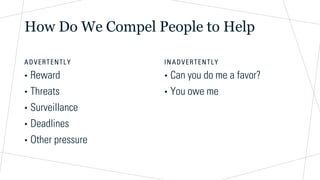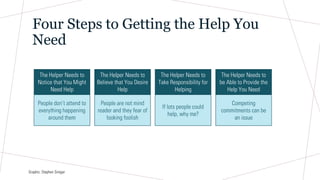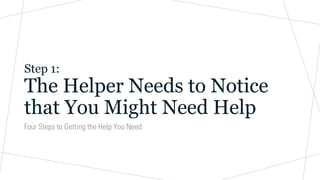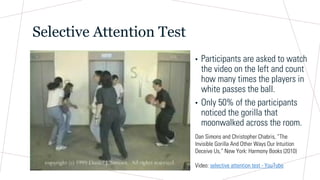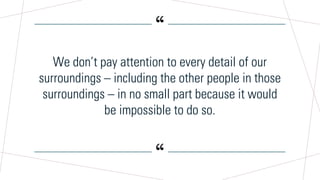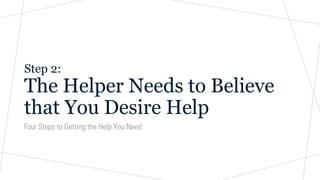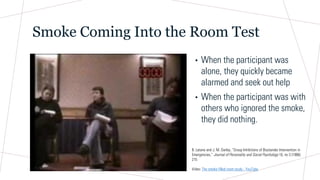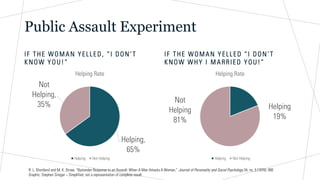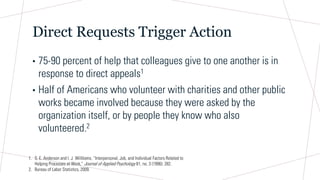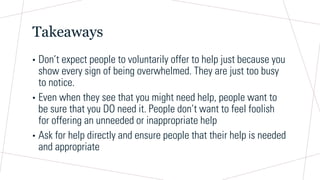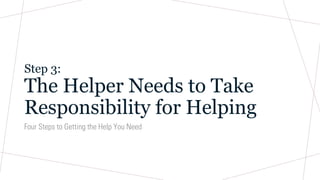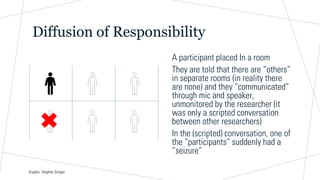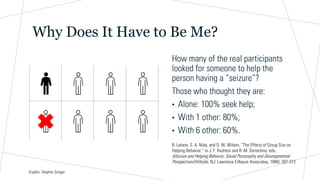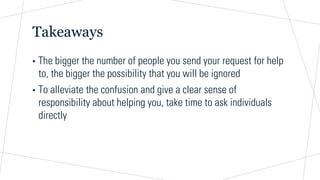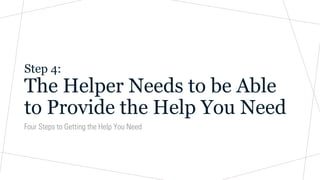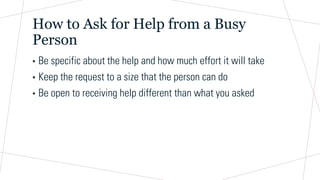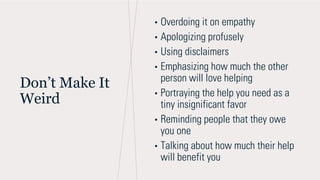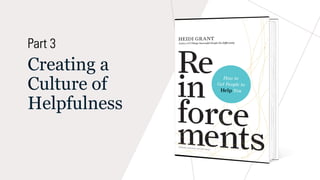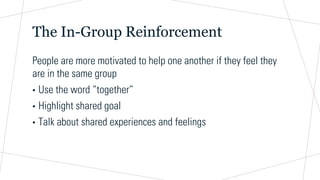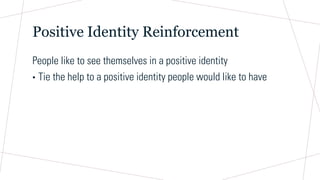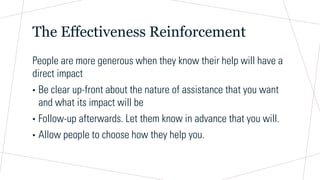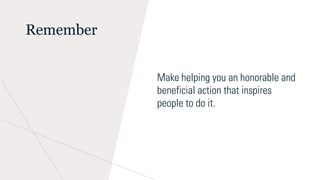Reinforcements: How to Get People to Help You - A Summary
- 1. Reinforcements How to Get People to Help You S U M M A R Y O F T H E B O O K B Y H E I D I G R A N T
- 2. Disclaimer ÔÇó This is a summary of a book. It may only partially convey the original intent and idea of the author(s). Please read the source book for complete understanding. ÔÇó To make this summary easier to understand, some additional materials were added. ÔÇó The rights to text, pictures, graphs, slide, layout, slide design, slide graphics, etc. contained herein belong to the creators/authors unless stated differently. ÔÇó This summary is for personal use only. Redistribution of this document in any form for commercial purposes may infringe copyright laws.
- 3. Citation Note Author: Halvorson, Heidi Grant Title: Reinforcements: How to Get People to Help You Boston, Massachusetts: Harvard Business Review Press [2018] ISBN: 9781633692350
- 4. Dr. Heidi Grant Halvorson ÔÇó Social psychologist ÔÇó Researches, writes and speaks about the science of motivation, influence and decision making ÔÇó In 2017 and 2019 was named one of ThinkerÔÇÖs 50 most influential management thinkers ÔÇó Director of R&D for EY American Learning ÔÇó Associate Director of Motivation Science Center at Columbia University Photo: Growth Instiitute
- 5. Other Books by Heidi Grant Images: Amazon.com
- 6. ÔÇó How to Ask for Yes ÔÇô and Get a Yes TED New York, 2019 ÔÇó No One Understands You and What To Do About It Talks at Google, 2016 ÔÇó The Incredible Benefits of a ÔÇ£Get BetterÔÇØ Mindset 99U Popup School, 2015 Photo: TED
- 7. Reinforcements How to Get People to Help You
- 8. reÔêÖinÔêÖforceÔêÖment /,reinÔÇÖf├┤rsmËÖnt/ Noun the action or process of reinforcing or strengthening - extra personnel sent to increase the strength of an army of similar force - the process of encouraging or establishing a belief or pattern of behavior, especially by encouragement or reward. Definitions from Oxford Languages
- 9. Book Sections Why asking for help is difficult How to ask anyway Creating a culture of helpfulness
- 10. Why Asking for Help is Difficult Part 1
- 11. Reason 1: It Makes Us Feel Bad Why Asking for Help Is Difficult
- 12. How Our Brain Processes Pain Image: Microsoft
- 13. Dorsal Anterior Cingulate Cortex Pain Social Rejection Hunger Thirst Breathlessness Part of the brain that processes pain that are important signals for our survival, both physical and emotional. Matthew D. Lieberman and Naomi I. Eisenberger, ÔÇ£The dorsal anterior cingulate cortex is selective for pain: Results from large-scale reverse inference.ÔÇØ Proceedings of the National Academy of Sciences of the United States of America (PNAS), December 8, 2015 Image: PNAS
- 14. ÔÇ£ ÔÇ£ Pain ÔÇô physical and social ÔÇô is as important signal in our quest for survival.
- 15. Pains that come from Threats Pain from Status Threats Pain from Certainty Threats Pain from Autonomy Threats Pain from Relatedness Threats Pain from Fairness Threats Images: Google.com
- 16. Reason 2: We Assume Others Will Say No Why Asking for Help is Difficult
- 17. How many people must be asked before they found one who would help? S T UDY P A R TICI PANTSÔÇÖ E S TI MATE A C TUAL R E S ULT 20 10 F. J. Flynn and V. K. Lake, ÔÇ£If You Need Help, Just Ask: Underestimating Compliance with Direct Requests for Help.ÔÇØ Journal of Personality and Social Psychology, no. 1 (2008): 128 Graphic: Stephen Siregar
- 18. ÔÇ£ ÔÇ£ People want to be helpful. Admittedly, not all people, but far more of us than you would imagine.
- 19. Reason 3: We Assume Asking for Help Will Make Us Less Likable Why Asking for Help is Difficult
- 20. Winning an Opponent This is another instance of the truth of an old maxim: ÔÇ£He that has once done you a kindness will be more ready to do you another than he whom you yourself have obliged.ÔÇØ Benjamin Franklin and Hanna Amelia (Noyes) Davidson, Autobiography of Benjamin Franklin: With Selections of His Other Writings (Boston: DC Heath & Co, 1908) Photo: staticflickr.com
- 21. We underestimate How Good Giving Makes People Feel ÔÇó Helping boosts your mood ÔÇó Helping makes things less awful ÔÇó More helping = greater life satisfaction
- 22. Takeaways ÔÇó If you feel bad asking for help, itÔÇÖs just in your mind ÔÇó People are more willing to help that we thought they were ÔÇó Asking for help doesnÔÇÖt make you less likeable
- 23. How to Ask Anyway Part 2
- 24. The Inherent Paradox in Asking for Help Although most people have an innate desire to feel helpful, they hate feeling compelled to help.
- 25. Why do You Help? Because You Want To Because You Have To Graphic: Stephen Siregar
- 26. Because You Want To vs Because You Have To W H EN Y O U W A NT T O H E LP ÔÇó You have autonomy ÔÇó You are intrinsically motivated ÔÇó You have greater interest and enjoyment in helping, even when itÔÇÖs challenging ÔÇó You are more creative in your thinking ÔÇó You absorb more knowledge ÔÇó You are resilient ÔÇó You will have greater improvement, superior performance, and deeper sense of satisfaction W H EN Y O U H A V E T O H E L P ÔÇó You are not likely to help, if possible ÔÇó You feel no autonomy (controlled) ÔÇó Your intrinsic motivation is destroyed ÔÇó You want to get this over with ÔÇó You donÔÇÖt care about quality
- 27. How Do We Compel People to Help A D V ERTENTLY ÔÇó Reward ÔÇó Threats ÔÇó Surveillance ÔÇó Deadlines ÔÇó Other pressure I N A DVER TENTLY ÔÇó Can you do me a favor? ÔÇó You owe me
- 28. Four Steps to Getting the Help You Need The Helper Needs to Notice that You Might Need Help People donÔÇÖt attend to everything happening around them The Helper Needs to Believe that You Desire Help People are not mind reader and they fear of looking foolish The Helper Needs to Take Responsibility for Helping If lots people could help, why me? The Helper Needs to be Able to Provide the Help You Need Competing commitments can be an issue Graphic: Stephen Siregar
- 29. Step 1: The Helper Needs to Notice that You Might Need Help Four Steps to Getting the Help You Need
- 30. Selective Attention Test Dan Simons and Christopher Chabris, ÔÇ£The Invisible Gorilla And Other Ways Our Intuition Deceive Us,ÔÇØ New York: Harmony Books (2010) Video: selective attention test - YouTube ÔÇó Participants are asked to watch the video on the left and count how many times the players in white passes the ball. ÔÇó Only 50% of the participants noticed the gorilla that moonwalked across the room.
- 31. ÔÇ£ ÔÇ£ We donÔÇÖt pay attention to every detail of our surroundings ÔÇô including the other people in those surroundings ÔÇô in no small part because it would be impossible to do so.
- 32. Step 2: The Helper Needs to Believe that You Desire Help Four Steps to Getting the Help You Need
- 33. Smoke Coming Into the Room Test ÔÇó When the participant was alone, they quickly became alarmed and seek out help ÔÇó When the participant was with others who ignored the smoke, they did nothing. B. Latane and J. M. Darley, ÔÇ£Group Inhibitions of Biystander Intervention in Emergencies,ÔÇØ Journal of Personality and Social Psychology 10, no 3 (1986): 215 Video: The smoke filled room study - YouTube
- 34. Public Assault Experiment I F T H E W O MAN Y E LLED, ÔÇ£ I D O N ÔÇÖT K N OW Y O U!ÔÇØ Helping, 65% Not Helping, 35% Helping Rate Helping Not Helping I F T H E W O MAN Y E LLED ÔÇ£ I D O NÔÇÖ T K N OW W H Y I M A R R IED Y OU!ÔÇØ Helping 19% Not Helping 81% Helping Rate Helping Not Helping R. L. Shortland and M. K. Straw, ÔÇ£Bystander Response to an Assault: When A Man Attacks A Woman,ÔÇØ Journal of Personality and Social Psychology 34, no. 5 (1976): 990 Graphic: Stephen Siregar ÔÇô Simplified, not a representation of complete result
- 35. Direct Requests Trigger Action ÔÇó 75-90 percent of help that colleagues give to one another is in response to direct appeals1 ÔÇó Half of Americans who volunteer with charities and other public works became involved because they were asked by the organization itself, or by people they know who also volunteered.2 1. S. E. Anderson and I. J. Willilams, ÔÇ£Interpersonal, Job, and Individual Factors Related to Helping Processes at Work,ÔÇØ Journal of Applied Psychology 81, no. 3 (1996): 282. 2. Bureau of Labor Statistics, 2009.
- 36. Takeaways ÔÇó DonÔÇÖt expect people to voluntarily offer to help just because you show every sign of being overwhelmed. They are just too busy to notice. ÔÇó Even when they see that you might need help, people want to be sure that you DO need it. People donÔÇÖt want to feel foolish for offering an unneeded or inappropriate help ÔÇó Ask for help directly and ensure people that their help is needed and appropriate
- 37. Step 3: The Helper Needs to Take Responsibility for Helping Four Steps to Getting the Help You Need
- 38. Diffusion of Responsibility A participant placed In a room They are told that there are ÔÇ£othersÔÇØ in separate rooms (in reality there are none) and they ÔÇ£communicatedÔÇØ through mic and speaker, unmonitored by the researcher (it was only a scripted conversation between other researchers) In the (scripted) conversation, one of the ÔÇ£participantsÔÇØ suddenly had a ÔÇ£seizureÔÇØ Graphic: Stephen Siregar
- 39. Why Does It Have to Be Me? How many of the real participants looked for someone to help the person having a ÔÇ£seizureÔÇØ? Those who thought they are: ÔÇó Alone: 100% seek help; ÔÇó With 1 other: 80%; ÔÇó With 6 other: 60%. B. Latane, S. A. Nida, and D. W. Wilson, ÔÇ£The Effects of Group Size on Helping Behavior,ÔÇØ in J. F. Rushton and R. M. Sorrentino, eds., Altruism and Helping Behavior: Social Personality and Developmental Perspectives (Hillside, NJ: Lawrence Erlbaum Associates, 1986): 287-313 Graphic: Stephen Siregar
- 40. Takeaways ÔÇó The bigger the number of people you send your request for help to, the bigger the possibility that you will be ignored ÔÇó To alleviate the confusion and give a clear sense of responsibility about helping you, take time to ask individuals directly
- 41. Step 4: The Helper Needs to be Able to Provide the Help You Need Four Steps to Getting the Help You Need
- 42. How to Ask for Help from a Busy Person ÔÇó Be specific about the help and how much effort it will take ÔÇó Keep the request to a size that the person can do ÔÇó Be open to receiving help different than what you asked
- 43. DonÔÇÖt Make It Weird ÔÇó Overdoing it on empathy ÔÇó Apologizing profusely ÔÇó Using disclaimers ÔÇó Emphasizing how much the other person will love helping ÔÇó Portraying the help you need as a tiny insignificant favor ÔÇó Reminding people that they owe you one ÔÇó Talking about how much their help will benefit you
- 45. The In-Group Reinforcement People are more motivated to help one another if they feel they are in the same group ÔÇó Use the word ÔÇ£togetherÔÇØ ÔÇó Highlight shared goal ÔÇó Talk about shared experiences and feelings
- 46. Positive Identity Reinforcement People like to see themselves in a positive identity ÔÇó Tie the help to a positive identity people would like to have
- 47. The Effectiveness Reinforcement People are more generous when they know their help will have a direct impact ÔÇó Be clear up-front about the nature of assistance that you want and what its impact will be ÔÇó Follow-up afterwards. Let them know in advance that you will. ÔÇó Allow people to choose how they help you.
- 48. Remember Make helping you an honorable and beneficial action that inspires people to do it.
- 49. THANK YOU B O O K S U M M A R Y B Y S T E P H E N S I R E G A R S L I D E D E S I G N B Y M I C R O S O F T O F F I C E A I


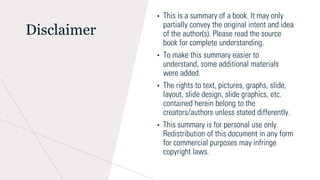
![Citation Note
Author: Halvorson, Heidi Grant
Title: Reinforcements: How to Get
People to Help You
Boston, Massachusetts: Harvard
Business Review Press [2018]
ISBN: 9781633692350](https://image.slidesharecdn.com/reinforcementsbooksummarytopublish-210215094534/85/Reinforcements-How-to-Get-People-to-Help-You-A-Summary-3-320.jpg)
